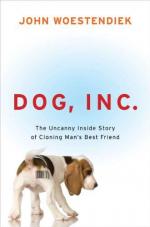|
This section contains 1,863 words (approx. 7 pages at 300 words per page) |

|
Ian Wilmut, interviewed by Andrew Ross
About the author: Ian Wilmut is an embryologist and cloning researcher at the Roslin Institute in Scotland. Andrew Ross is managing editor of Salon, a monthly on-line magazine.
Human cloning research is ethically unacceptable due to the numbers of embryos that would be killed in such experiments. However, animal cloning research should be allowed because it can help scientists invent biomedical treatments for humans with serious diseases, produce organs for xenotransplantation (animalto- human organ transplants), and create healthier, more diseaseresistant livestock.
"Researchers Astounded . . . Fiction Becomes True and Dreaded Possibilities Are Raised." So went the headlines in Sunday's New York Times [February 23, 1997] about Dr. Ian Wilmut, the embryologist in Edinburgh who has made history by creating a lamb from the DNA of an adult sheep. The research...
|
This section contains 1,863 words (approx. 7 pages at 300 words per page) |

|




